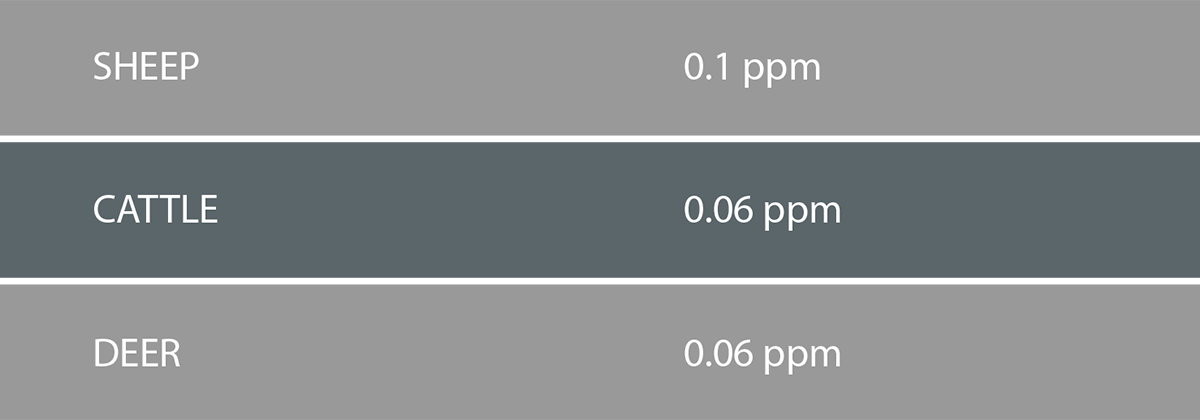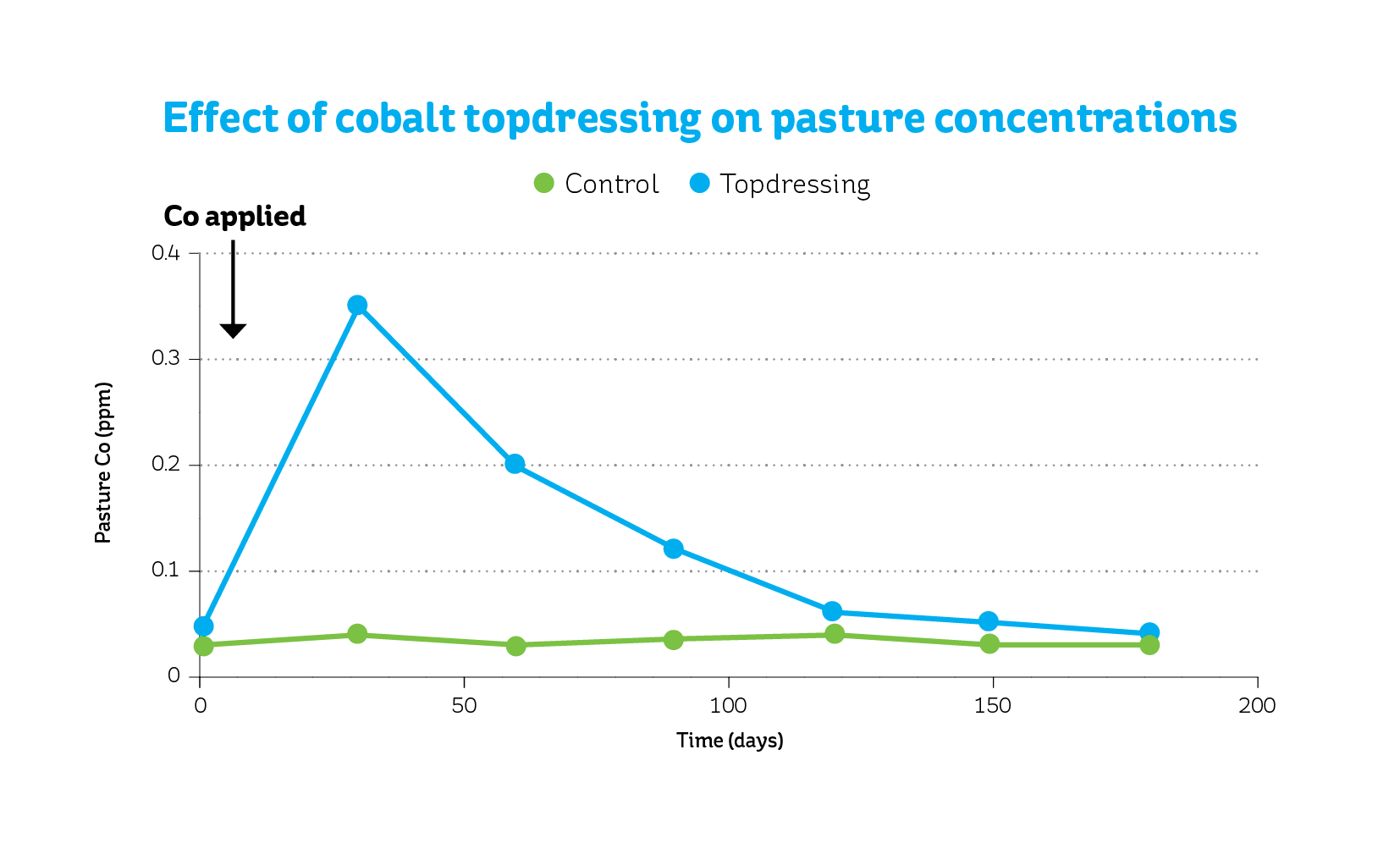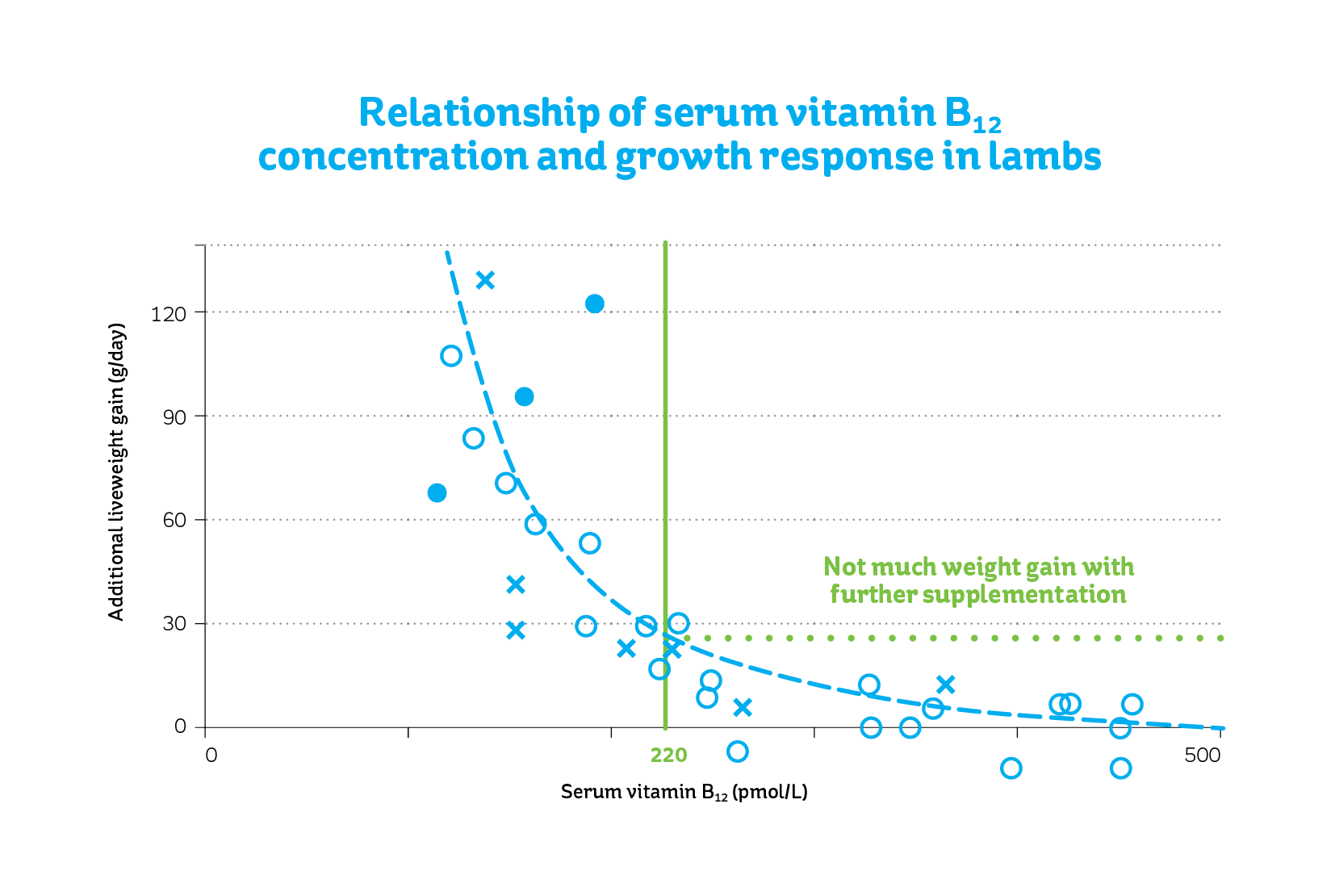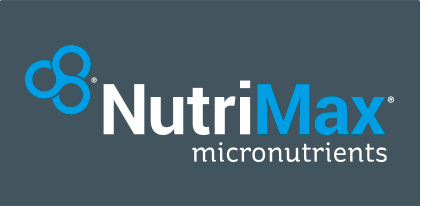NutriMax Cobalt 10%
Cobalt (Co) increases animal appetites ensuring that stock achieve growth and production targets.
![]()
Boost animal growth and productivity
Cobalt promotes the metabolism of food inside the rumen of grazing animals.
Cobalt's role in animal health
Cobalt in pasture is converted into vitamin B12 by micro-organisms inside the rumen of grazing stock. Vitamin B12 assists the rumen, and micro-organisms inside the rumen, to breakdown certain foods into absorbable components. This promotes a healthy appetite as the energy yield from food sources is metabolised quickly and the animal is ready quicker to eat again.
B12 is also crucial for the production of red blood cells and maintains the integrity of the nervous system. Without cobalt, animals can lose their appetites and miss growth milestones.
![]()
Widespread opportunity
Sheep require the most cobalt and young stock are always more susceptible to experiencing a cobalt deficiency, than mature stock. Deficiencies in sheep are noticeable by watery-eye and anaemia. In cows, dull harsh coats, watery-eye and reduced milk production can be evident.
The recommended dietary Co levels in herbage that are considered adequate for animals are:

Cobalt deficient soils occur in several regions of NZ; the central North Island where the soil is largely formed from rhyolitic ash or pumice, the north-west Nelson area where the soil is largely granite, and in Southland where some leached brown soils occur. Deficiencies can also occur in soils which are acidic, highly leached, sandy or peaty.
![]()
Supplementing cobalt
Applying cobalt fertiliser rapidly increases pasture concentrations within 4-6 weeks (see graph below). Typically the application of cobalt at appropriate rates elevates herbage levels for around three months (90-100 days), so it is ideal for topdressing to occur in mid to late spring, just prior to weaning.
Including cobalt when applying fertiliser can be a cost effective way of ensuring adequate cobalt is provided through feed. This in turn, reduces the potential need for other means of animal supplementation.

![]()
The benefits of supplementation
The graph below demonstrates the advantage of ensuring adequate dietary cobalt where animals (in this case lambs) are low in B12. In such situations animals can be seen to be highly responsive to the supplementation of cobalt, which they convert into B12, exhibiting significant live weight gain. As existing levels of B12 increase the opportunity for additional growth from cobalt supplementation trails off.

